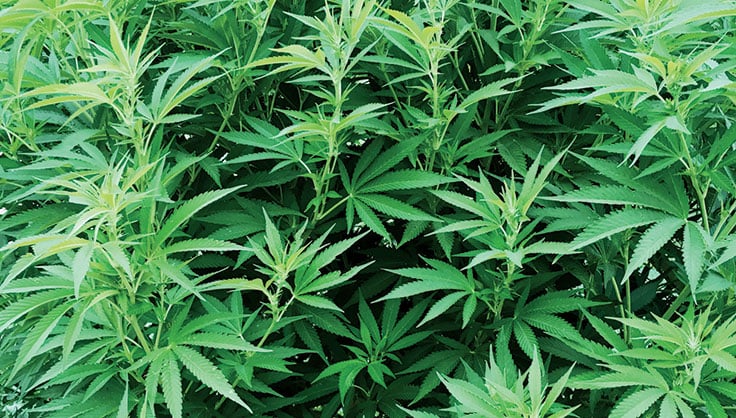Hemp has been cultivated and utilized by various cultures for thousands of years, with evidence of its use dating back to ancient China. However, the modern hemp industry has faced challenges due to legal restrictions and regulations. Today, hemp manufacturing is resurging as a sustainable and versatile solution for various industries. The environmental benefits of hemp, such as its carbon sequestration capabilities and minimal resource requirements, have contributed to its increasing popularity.
The Hemp Plant: Anatomy and Components
The hemp plant consists of various components that can be used in a myriad of applications. These components include the stalk, seeds, and the leaves and flowers.
The stalk, which provides fiber, can be utilized in textiles, building materials, and paper products. Seeds, rich in proteins and fatty acids, are a valuable source of food and oil. While the leaves and flowers contain cannabinoids like CBD are used extensively in health and wellness products bitsandboxes.
Hemp-Derived Products: A Comprehensive List
With the growing interest in hemp and its applications, numerous products are being developed by hemp makers. These products span across several industries, such as textiles, construction, and health.
Textiles and Fabrics
Hemp fibers, derived from the stalk, are increasingly being used in the production of sustainable clothing, shoes, and accessories. Known for their durability and breathability, hemp textiles also offer UV protection and antimicrobial properties networthexposed.
Building Materials
Hemp-based building materials, such as hempcrete and insulation, are gaining attention for their eco-friendly properties. These materials, made from hemp hurd, are biodegradable, non-toxic, and energy efficient wrinky.
Paper Products
Hemp paper, made from the plant’s fibers, provides a sustainable alternative to traditional wood pulp paper. It requires fewer resources and chemicals for production, while offering similar strength and durability lifeline hospital.
Food and Beverages
Hemp seeds are a highly nutritious food source, offering essential amino acids and Omega fatty acids. They can be consumed as raw seeds, pressed into oil, or used as an ingredient in various food products, like protein bars and hemp milk.
Health and Wellness Products
Hemp’s leaves and flowers are the primary sources for CBD extraction. CBD, or cannabidiol, is a non-psychoactive compound used in various health products such as tinctures, CBD smokables, capsules, and topical applications sdasrinagar.
Biofuels and Bioplastics
Hemp can also be converted into biofuels like biodiesel. Additionally, bioplastics derived from hemp can help reduce the reliance on petroleum-based plastics.
Animal Feed and Bedding
The byproducts of hemp manufacturing, such as seed cake and hurd, can be utilized as nutritious animal feed and absorbent bedding material.
Hemp Manufacturing Processes
Harvesting and Processing Hemp Fibers
The initial steps in hemp manufacturing involve the separation of the fibers from the stalk. This can be done using two methods:
- Retting – Retting is a process that involves soaking hemp stalks in water, allowing natural bacteria to break down the lignin that binds the fibers together. After retting, the fibers are dried and then mechanically separated.
- Decortication – Decortication is a mechanical process in which the outer bark of the stalk is removed, leaving the fibers and the hurd. These fibers can then be further processed and spun into yarn for textiles.
Hemp Seed Processing
- Dehulling – Dehulling is the process of removing the outer shell of the hemp seeds to obtain the nutritious inner kernel.
- Oil Extraction – Oil extraction involves pressing the inner kernel of the hemp seed to obtain hemp seed oil, which can be used in cooking, skincare products, and as a dietary supplement.
CBD Extraction from Hemp Flowers
To produce CBD products, the cannabinoid must be extracted from the hemp plant. Two common methods used by hemp smoke manufacturers include:
- Water Extraction – Water extraction, also known as solventless, uses water to leach cannabinoids from the plant without the use of harmful solvents, harsh chemicals, or hydrocarbons. The process also effectively removes impurities and forgoes the need for remediation to rid the product of volatile solvents.
- Ethanol Extraction – Ethanol extraction employs the use of food-grade ethanol as a solvent to extract CBD from the hemp plant. This method is cost-effective and can produce large quantities of CBD, though it may leave traces of the solvent behind.
Quality Control and Certification
Ensuring the quality and safety of hemp-derived products is crucial for both hemp manufacturers and consumers. Several measures are commonly employed to maintain high standards:
- Standard Operating Procedures – Hemp manufacturers should adhere to strict standard operating procedures (SOPs) to maintain quality control throughout the production process.
- Third-Party Testing – Reputable hemp manufacturers often have their products tested by independent third-party labs, which verify the product’s purity, potency, and absence of contaminants.
- Organic and Sustainable Certifications – Organic and sustainable certifications can further assure consumers that the products they purchase are made from hemp grown without harmful chemicals and in an eco-friendly manner.
Market Opportunities and Challenges
As the demand for hemp-derived products continues to grow, various opportunities and challenges arise for hemp manufacturers:
- Growing Consumer Interest – The increasing awareness of hemp’s potential has led to a growing consumer interest, opening up new markets for hemp-derived products across numerous industries.
- Evolving Regulations – Hemp regulations are constantly evolving, creating both opportunities and challenges for hemp makers. While the legal landscape can be complex, it is essential for manufacturers to stay informed and compliant.
- Technological Advancements in Hemp Manufacturing – Technological advancements in hemp manufacturing can help improve efficiency, reduce costs, and expand the range of available products. Staying at the forefront of these innovations can give manufacturers a competitive edge superstep.
The potential of hemp manufacturing is vast, touching on numerous industries and offering sustainable alternatives to traditional materials and products. As the market continues to grow, innovation and adaptability will be crucial for hemp manufacturers looking to succeed in this evolving industry. By understanding the various processes and products, both new and established hemp makers can navigate the challenges and seize the opportunities offered by the versatile hemp plant.

